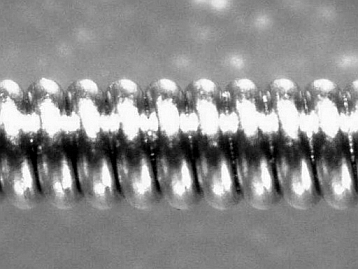
Strings 101
- Wound Strings
Although wound strings (or wrapped strings) have been around for many years, their design represents one of the biggest breakthroughs in string design. The first known wound string was noted in the later half of the seventeenth century. Wound strings are also known as "overspun" strings. The problem with early stringed instruments, including the piano, was a problem of tonal range. Getting lower frequency from a string was challenging due to a string having a small mass associated with it. If the string was made thicker, it became too stiff and rigid to maintain it's playability for a musician. Before the invention of wound strings, earlier strings were intertwined together to get the necessary string mass needed. The results were not very good as the vibrational energy would not remain stable each time the string was struck (See the String Physics section for more details on how string mass works.) Upon the arrival of alternative string materials such as steel, the wound string came into being. The first wound string came into being around the later half of the seventeenth century. The string consisted of a core string made of gut, with a thin wire wound around it with multiple turns. This construction is still predominate in today's wound strings with variations on core shapes and materials. Core materials can be silk, nylon, kevlar, Perlon, steel and cat gut.

